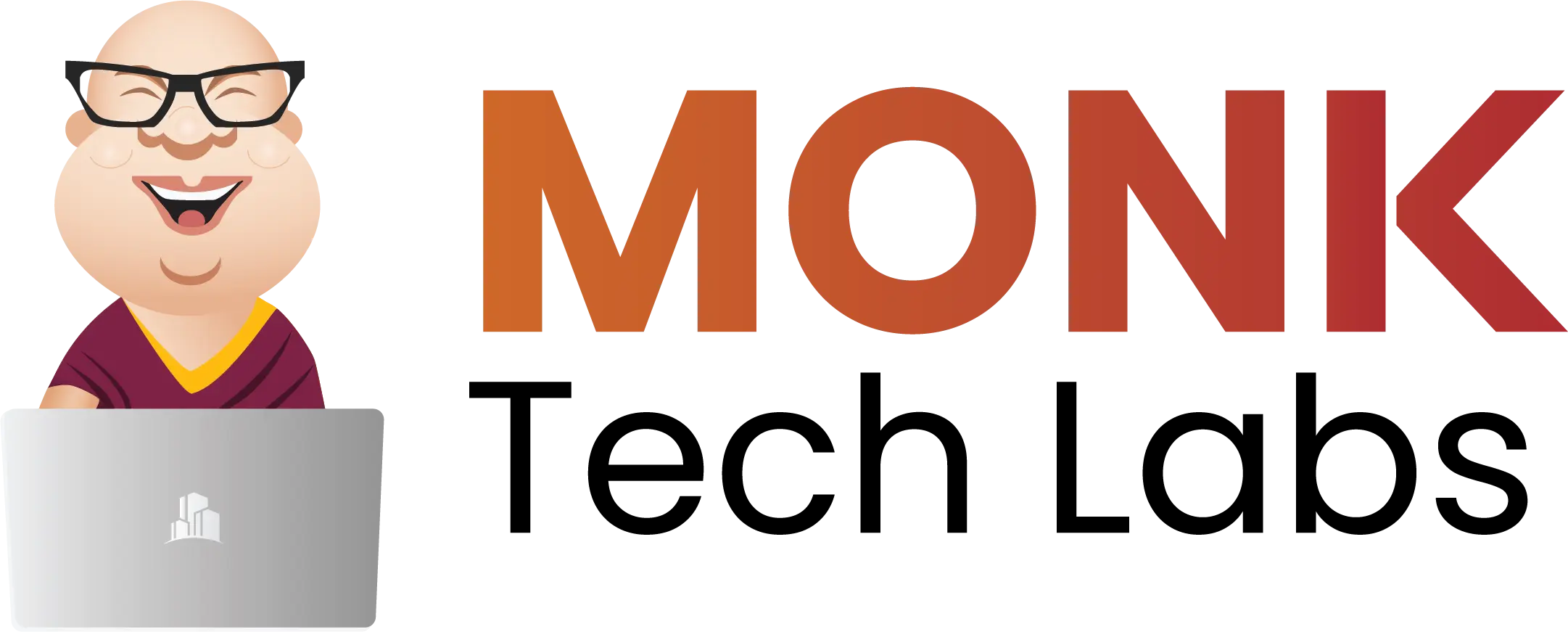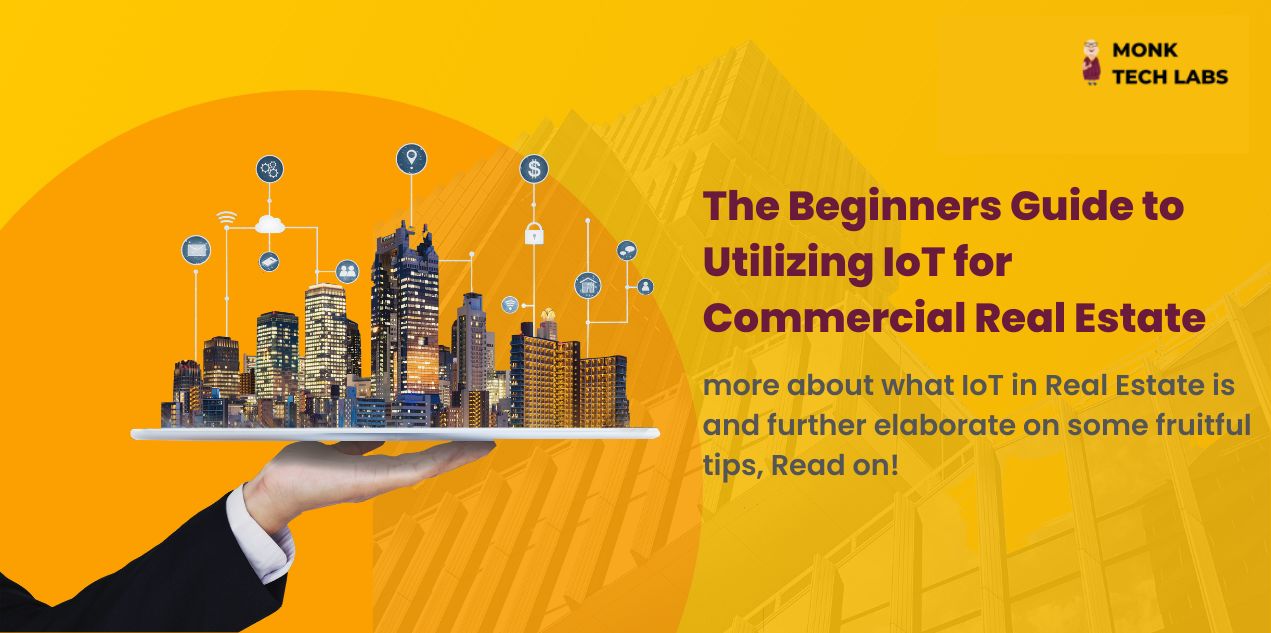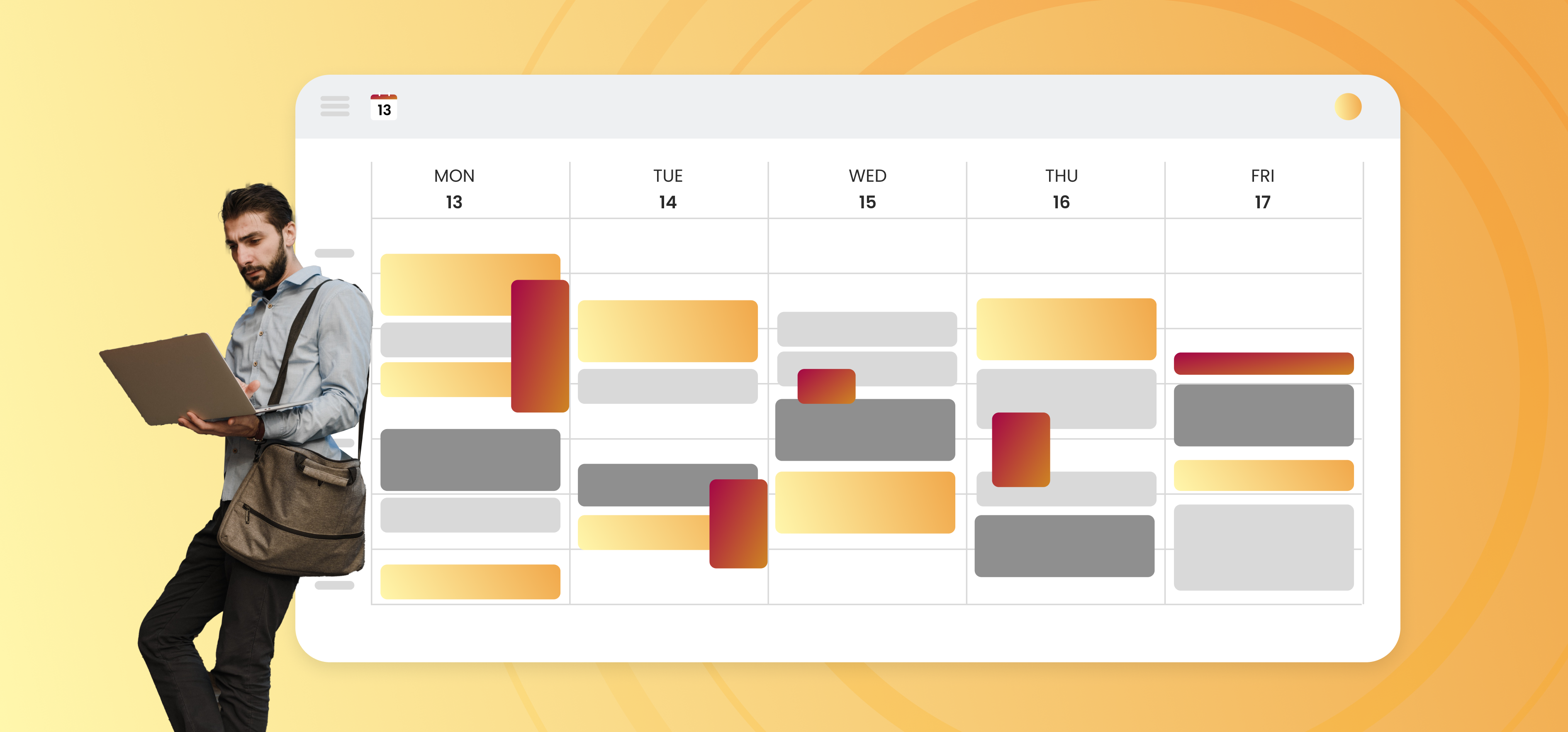As every decade passes, the real estate industry changes so fast-paced that instantaneous, intersectional effects reflect everywhere. During such a dynamic period, it becomes increasingly pertinent to not only adapt but to comprehensively equip yourself with innovation in technology. Needless to say, this is to improve operational efficiency as well as tenant satisfaction, when talking in border terms.
One of these tech tools is something that’s been gaining a lot of traction – IoT i.e. Internet of Things. If you’ve heard about this before then we’re gonna have a more extensive discussion about it, and if not, we’ve still got you covered!
We will be exploring more about what IoT in Real Estate is and further elaborate on some fruitful tips that you can leverage as a real estate professional with the Internet of Things in real estate. Read on!
IoT in a Nutshell
IoT is essentially the amalgamation of a multitude of devices, systems/setups and buildings with the aim of making real estate management more efficient[1]. The landscape of real estate is transforming thanks to the Internet of Things in Real Estate, enabling companies to sharpen their competitive edge and streamline costs.
Through IoT-powered interconnected physical devices, real estate professionals can enhance the home-hunting journey, locate buyers for unoccupied properties, and attain their financial objectives with precision.
Why IoT When Other Resources Really Work Just Fine?!
Well, we do have a compelling one-word answer – Competition.
In the freshest insights unveiled by the IoT Analytics “Spring 2023 State of IoT”[2] report, a compelling narrative emerges. It reveals a staggering 18% surge in global IoT connections throughout the year 2022, catapulting the tally to an impressive 14.3 billion active IoT endpoints.
As we advance more and more towards optimizing with the most out of every technology available, IoT in real estate doesn’t stay behind. Hence, the IoT landscape shows only an exponential anticipatory growth in 2023. There is currently an astounding count of 16.7 billion actively connected endpoints as the above report suggests a 16% expansion, globally.
More than 15 billion IoT devices are embedded in everyday objects – right from your TV, dishwasher, washing machines, cars, and many more. Additionally, according to Statista, this figure is projected to ascend even higher, scaling the majestic peak of 29 billion by the year 2030.
To Delve Deeper, Why Do We Need IoT in Real Estate Then?
According to a Deloitte survey conducted in 10 countries that consisted of 750 CRE owners/operators, developers, brokers, and investors, 29% of them stated that tenant risk is one of the major challenges that the CRE industry faces.

Here are some ways IoT is being used in commercial real estate. Let’s take it step-by-step:
1. Smart Building Management: IoT sensors and devices can be used to monitor and control various aspects of building operations, such as lighting, temperature, energy consumption and real-time energy monitoring. This results in cost savings and improved energy efficiency for operations in commercial real estate.
2. Tenant Experience: IoT in real estate can be used to enhance the tenant experience by providing smart amenities such as automated lighting, temperature control, and security systems. Utilizing this aspect can help you avail increased tenant satisfaction and retention.

3. Predictive Maintenance: IoT sensors can be used to monitor equipment and systems in real time, allowing for predictive maintenance and reducing downtime, thereby improving operational efficiency and escalating cost savings.

According to the same survey, only 8% of professionals submitted that they do not inculcate IoT sensors in their business. That evidently says a lot about what your current competition might be doing right.
4. Space Utilization: IoT sensors can be used to monitor space utilization, allowing property managers to optimize space usage and reduce costs. As per Gartner’s findings, IoT for real estate has the potential to reduce expenses related to energy consumption, spatial management, and building maintenance by as much as 30%.
IoT-Powered Predictive Analytics and Preventive Maintenance
IoT in real estate analytics is a harmonious union, especially when it comes to preventive maintenance. This synergy yields a remarkable array of advantages, including:
Vigilant Equipment and Asset Monitoring: IoT empowers the constant surveillance of critical equipment and assets within a building, providing real-time insights into their operational status.
Prolonged Equipment Lifespan: By proactively identifying potential issues, IoT aids in extending the lifespan of essential equipment, thereby reducing the need for premature replacements.
Timely Failure Tracking: The system is adept at tracking and flagging failures, from malfunctioning elevators to HVAC system irregularities, enabling swift interventions to mitigate disruptions.
Minimized Equipment Failures: Through predictive analytics, IoT for real estate helps minimize unexpected equipment breakdowns, ensuring uninterrupted building operations.
Optimal Utilization of Maintenance Teams: IoT data enables the optimal deployment of maintenance teams, ensuring that resources are allocated efficiently to address priority issues.
Enhanced Operator Safety: IoT’s proactive monitoring enhances operator safety by preemptively addressing potential hazards and safety concerns.
Proactive Alerts: Commercial real estate professionals receive timely notifications when major equipment is on the verge of failure, allowing for proactive maintenance and cost savings.
Streamlined Automation: By automating manual tasks, IoT eliminates the need for resource-intensive manual labor, effectively reducing avoidable high repair costs.
Limitations and Concerns of Using Internet of Things in Real Estate
The main parameters to take into account are preventative measures against data exploitation. The datasets in real estate documents and reports do contain sensitive financial information that might be prone to attacks. Hence, data protection and privacy must be non-negotiable always and every time.
Key Takeaways
Per Fortune Business Insights, the IoT market is poised for an electrifying increase, forecasted to surge at an annual growth rate of 26%. By the year 2029, it is projected to bask in the amount to a nearly 2.5 trillion USD valuation, marking a monumental milestone in its evolution. Talking about smart industries, which include the real estate market, it is projected that the usage of IoT for real estate in operational purposes shall make a sustainable impact on their productivity, growth and profitability, thereby accelerating market growth.
An important point to note is that multifamily housing such as flats, villas, condos, high-rise apartments, terraced dwellings, etc. are projected to hold a greater market share and even register high CAGR when adapted to IoT technology. This is of course because of the advantage of high network connectivity among the system via IoT services.
Monk Tech Labs is a leading provider of property management software that leverages IoT to optimize operations and improve your tenant satisfaction. Our software helps streamline rental operations, allowing property managers to efficiently manage their properties and boost occupancy rates. It offers features such as automated workflows, custom apps for tenants, and shared amenities monetization. This platform transforms property management by providing a single dashboard for managing various aspects of property operations, including maintenance, tenant communication, and financial management.
IoT is a powerful tool that can help improve operational efficiency and tenant satisfaction in commercial real estate. With the help of Monk Tech Labs’ TheOfficeMonk, as a property manager you can leverage IoT to optimize your operations and provide a better experience for your tenants. Let’s talk!
References
1. KPMG International. (2022). Real Estate Innovations Overview. Real Estate Innovations Overview
2. IoT Analytics: Number of connected IoT devices growing 16% to 16.7 billion globally (iot-analytics.com)
4. Statista: IoT connected devices worldwide 2019-2030 | Statista
6. Forbes: How IoT Is Reshaping The Real Estate Industry
7. Deloitte: Smart buildings: How IoT technology aims to add value for real estate companies
8. Gartner: Gartner Says Smart Cities Will Use 1.6 Billion Connected Things in 2016
9. Fortune Business Insights: Internet of Things [IoT] Market Size, Share & Growth by 2030
10. Fortune Business Insights: The global smart home market size was valued at $80.21 billion in 2022 & is projected to grow from $93.98 billion in 2023 to $338.28 billion by 2030….






























79 Responses
We absolutely love your blog and find most of your post’s to be exactly what I’m looking
for. Do you offer guest writers to write content in your case?
I wouldn’t mind producing a post or elaborating on a lot of the subjects you write in relation to here.
Again, awesome weblog!
When I originally commented I appear to have clicked on the -Notify me when new comments are added- checkbox and now every time a comment is added I get four emails with the same comment. Perhaps there is an easy method you can remove me from that service? Appreciate it.
Oh my goodness! Amazing article dude! Thanks, However I am encountering issues with your RSS. I don’t understand why I am unable to subscribe to it. Is there anybody getting similar RSS problems? Anyone that knows the solution will you kindly respond? Thanx!
This site certainly has all of the information I wanted about this subject and didn’t know who to ask.
I love reading through a post that will make people think. Also, many thanks for allowing for me to comment.
Great info. Lucky me I recently found your site by chance (stumbleupon). I’ve saved as a favorite for later.
Good post. I am dealing with a few of these issues as well..
Good post. I learn something totally new and challenging on websites I stumbleupon every day. It’s always useful to read through articles from other authors and practice a little something from other websites.
indian pharmacy paypal: best online pharmacy india – reputable indian online pharmacy
canadian discount pharmacy: canadian 24 hour pharmacy – canadian pharmacy 1 internet online drugstore
medicine in mexico pharmacies best online pharmacies in mexico mexican border pharmacies shipping to usa
canadian pharmacy oxycodone: best canadian pharmacy to order from – reliable canadian pharmacy
https://canadapharmast.online/# canada drug pharmacy
mexican drugstore online: mexican drugstore online – mexico pharmacies prescription drugs
mexican pharmaceuticals online: mexico drug stores pharmacies – mexico drug stores pharmacies
medicine in mexico pharmacies best online pharmacies in mexico mexico drug stores pharmacies
indian pharmacy: indian pharmacies safe – india pharmacy mail order
There’s certainly a lot to know about this subject. I really like all of the points you made.
https://foruspharma.com/# buying from online mexican pharmacy
mail order pharmacy india: reputable indian pharmacies – india online pharmacy
This article deserves a wider audience.검색엔진최적화 배우기
cheapest online pharmacy india: п»їlegitimate online pharmacies india – top online pharmacy india
best india pharmacy online pharmacy india top online pharmacy india
canadian pharmacy world reviews: canadian online pharmacy – canadianpharmacyworld
buying prescription drugs in mexico: mexican pharmaceuticals online – mexico drug stores pharmacies
best india pharmacy: indian pharmacy – buy medicines online in india
Your style is very unique compared to other folks I’ve read stuff from. I appreciate you for posting when you have the opportunity, Guess I’ll just bookmark this web site.
http://foruspharma.com/# mexico drug stores pharmacies
Hi, I do believe this is an excellent site. I stumbledupon it 😉 I’m going to come back yet again since i have saved as a favorite it. Money and freedom is the best way to change, may you be rich and continue to help others.
You’ve captured the essence of this issue perfectly.seo 백링크
mexican pharmaceuticals online: mexican online pharmacies prescription drugs – п»їbest mexican online pharmacies
https://doxycyclinedelivery.pro/# doxycline
Good day! I just wish to give you a big thumbs up for the excellent information you have right here on this post. I’ll be coming back to your web site for more soon.
I couldn’t refrain from commenting. Exceptionally well written.
http://paxloviddelivery.pro/# paxlovid pill
cost of generic clomid pill: clomid pill – can i order clomid online
I was very pleased to discover this website. I wanted to thank you for your time due to this fantastic read!! I definitely savored every part of it and I have you book-marked to look at new information on your blog.
http://clomiddelivery.pro/# can i purchase cheap clomid no prescription
After I originally commented I seem to have clicked on the -Notify me when new comments are added- checkbox and from now on whenever a comment is added I get 4 emails with the exact same comment. Is there an easy method you are able to remove me from that service? Many thanks.
amoxicillin over the counter in canada: generic amoxicillin cost – amoxicillin 500mg
http://ciprodelivery.pro/# п»їcipro generic
This is a very good tip particularly to those fresh to the blogosphere. Short but very accurate info… Appreciate your sharing this one. A must read post!
I would like to thank you for the efforts you’ve put in writing this blog. I really hope to check out the same high-grade content by you later on as well. In fact, your creative writing abilities has motivated me to get my own site now 😉
http://amoxildelivery.pro/# amoxicillin 250 mg
I want to to thank you for this wonderful read!! I absolutely enjoyed every little bit of it. I’ve got you book marked to look at new stuff you post…
can you buy clomid without insurance: cheap clomid pill – can i order generic clomid pill
After going over a few of the articles on your web page, I seriously appreciate your way of blogging. I book marked it to my bookmark site list and will be checking back soon. Please check out my website too and tell me how you feel.
http://paxloviddelivery.pro/# п»їpaxlovid
Howdy, I think your web site might be having browser compatibility problems. When I look at your web site in Safari, it looks fine however, when opening in I.E., it’s got some overlapping issues. I simply wanted to provide you with a quick heads up! Other than that, great website.
It’s nearly impossible to find well-informed people in this particular subject, however, you sound like you know what you’re talking about! Thanks
https://clomiddelivery.pro/# where to get cheap clomid without dr prescription
doxycycline price: doxycycline antibiotic – doxycycline medication
Hi! I just would like to give you a huge thumbs up for the great information you’ve got right here on this post. I am coming back to your blog for more soon.
Right here is the perfect blog for everyone who hopes to understand this topic. You realize a whole lot its almost hard to argue with you (not that I really would want to…HaHa). You certainly put a fresh spin on a subject that has been discussed for many years. Great stuff, just great.
That is a good tip especially to those new to the blogosphere. Simple but very precise info… Appreciate your sharing this one. A must read article!
http://amoxildelivery.pro/# amoxicillin 500mg capsules
paxlovid buy: paxlovid pharmacy – paxlovid cost without insurance
http://amoxildelivery.pro/# can i buy amoxicillin online
Can I just say what a comfort to discover a person that really knows what they’re discussing online. You actually realize how to bring a problem to light and make it important. More people should check this out and understand this side of your story. I was surprised you are not more popular given that you definitely have the gift.
Everyone loves it when people get together and share views. Great site, continue the good work.
can you buy clomid no prescription: where can i buy clomid without a prescription – where to get clomid now
This is a topic which is near to my heart… Many thanks! Where are your contact details though?
Everyone loves it when individuals get together and share opinions. Great site, continue the good work!
You made some really good points there. I looked on the web for additional information about the issue and found most people will go along with your views on this website.
ciprofloxacin 500mg buy online: п»їcipro generic – buy cipro online canada
I used to be able to find good information from your blog posts.
Working synergistically, WMS and WCS can resolve these issues and maximize
efficiency for corporations that rely on the efficient operation of their warehouse or distribution heart.
A WMS plans a weekly activity forecast based mostly on such elements as statistics and traits, whereas a WCS acts like a
flooring supervisor, working in actual-time to get the job carried out by the simplest
means.
Oh my goodness! Impressive article dude! Thanks, However I am experiencing issues with your RSS. I don’t understand why I cannot join it. Is there anybody else getting identical RSS issues? Anyone that knows the solution will you kindly respond? Thanks!!
Good day! I could have sworn I’ve visited this web site before but after browsing through a few of the articles I realized it’s new to me. Anyhow, I’m definitely delighted I stumbled upon it and I’ll be book-marking it and checking back often.
Good day! I could have sworn I’ve been to this site before but after going through many of the articles I realized it’s new to me. Nonetheless, I’m definitely pleased I found it and I’ll be book-marking it and checking back often.
Good post. I learn something totally new and challenging on websites I stumbleupon everyday. It’s always exciting to read through content from other authors and practice a little something from their sites.
Next time I read a blog, I hope that it does not fail me as much as this particular one. After all, Yes, it was my choice to read, but I truly thought you’d have something interesting to say. All I hear is a bunch of crying about something you could fix if you were not too busy seeking attention.
Spot on with this write-up, I honestly feel this website needs much more attention. I’ll probably be back again to read through more, thanks for the information.
Excellent post! We are linking to this great content on our website. Keep up the great writing.
May I just say what a comfort to find a person that truly understands what they are discussing on the internet. You actually know how to bring a problem to light and make it important. A lot more people have to check this out and understand this side of your story. I was surprised you’re not more popular given that you certainly have the gift.
I used to be able to find good information from your blog articles.
This web site truly has all of the information and facts I needed about this subject and didn’t know who to ask.
I wanted to thank you for this good read!! I certainly loved every bit of it. I have you bookmarked to look at new things you post…
I love it whenever people get together and share views. Great blog, stick with it.